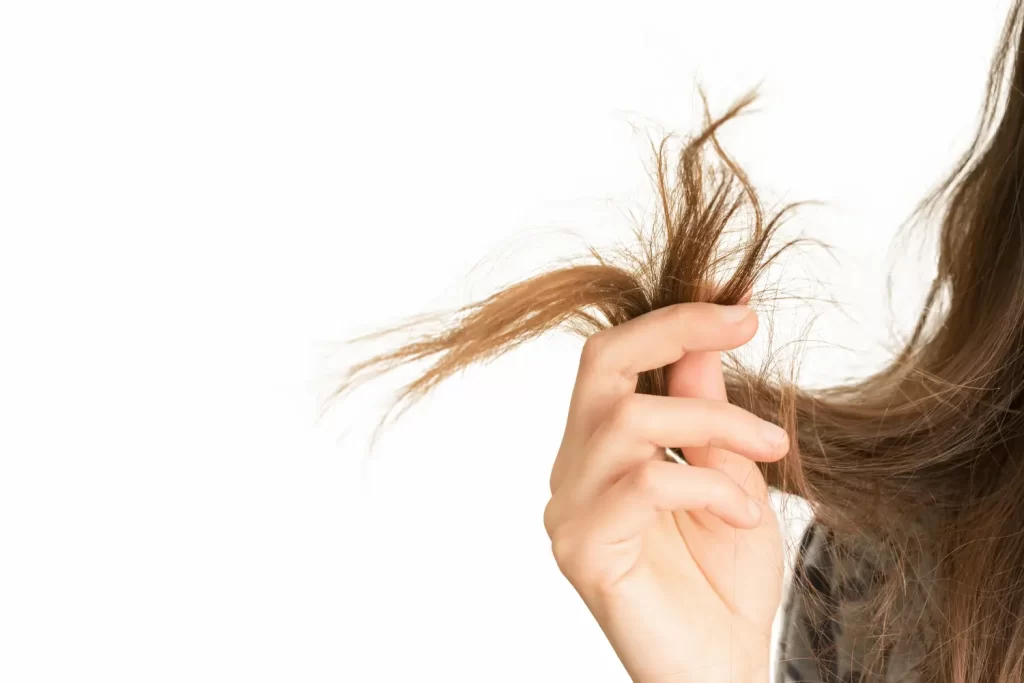
Split ends, those frayed, brittle tips that make your hair look dry and damaged, are more than just a cosmetic annoyance. These pesky splits indicate that your hair is unhealthy due to internal damage. Women experiencing menopause may see split ends appearing with greater frequency than before.
Why? Menopause causes natural estrogen levels to decrease which creates problems for your hair because estrogen helps maintain its strength and moisture. The reduction of this hormone causes hair to lose moisture and thickness while becoming more brittle which leads to the formation and progression of split ends. Your hair strands begin to show visible damage when exposed to daily stress factors such as heat styling or sun exposure while brushing.
But there’s good news: Split ends during menopause can be successfully treated and do not constitute a permanent condition. Let’s learn more about what causes split ends and proven solutions, including daily hair care routines and salon treatments, along with product suggestions and lifestyle changes to help restore your hair’s strength and health.
Caring for menopausal hair daily can significantly reduce split ends and improve hair health. Start by washing your hair gently. Avoid hot water, which can strip natural oils, and opt for lukewarm instead. Use mild, sulfate-free shampoos designed for dry or thinning hair to maintain moisture balance.
Conditioning is crucial. Choose rich conditioners or moisturizing hair masks to restore hydration and strengthen hair strands. Applying a leave-in conditioner or serum after washing can help seal split ends and protect against environmental damage.
Limit heat styling tools like flat irons and curling wands, as heat can worsen dryness and breakage. When drying hair, gently pat with a microfiber towel or let hair air dry whenever possible, avoiding rough rubbing that causes mechanical damage.
Regularly detangling hair with a wide-tooth comb, starting from the ends and moving upward, also prevents unnecessary pulling that leads to split ends.
Regular trims are essential for managing split ends during menopause. Trimming every 6 to 8 weeks removes damaged ends before they travel up the hair shaft, preventing further breakage and keeping hair looking healthy.
Professional deep conditioning or protein treatments can also help restore strength and moisture to menopausal hair. These salon treatments penetrate the hair cuticle, replenishing lost nutrients and repairing damage from dryness and hormonal changes.
If your hair feels particularly brittle or thin, consult a stylist about treatments specifically designed for aging or menopausal hair. These might include bonding treatments or scalp therapies that stimulate hair growth and improve texture.
Combining regular haircuts with professional care supports overall hair resilience and reduces the likelihood of split ends worsening.
Choosing the right products can make a big difference in treating split ends during menopause. Look for shampoos and conditioners formulated specifically for dry, thinning, or aging hair. They often contain nourishing ingredients like biotin, keratin, and natural oils to strengthen strands.
Leave-in conditioners, serums, and hair oils are excellent for sealing split ends and adding extra moisture. Ingredients such as argan oil, jojoba oil, and shea butter help smooth hair cuticles and prevent further damage.
Avoid products with harsh sulfates, alcohols, or silicones that can strip moisture or weigh hair down. Instead, opt for lightweight formulas that hydrate without buildup.
Using a combination of these targeted products consistently will help restore softness, reduce breakage, and improve the overall appearance of menopausal hair.

Healthy hair starts from within, especially during menopause. Eating a balanced diet rich in vitamins and minerals like biotin, vitamin D, zinc, and omega-3 fatty acids supports hair strength and growth. Consider supplements formulated for hair health if your diet lacks these nutrients.
Managing stress is also vital because high stress levels can accelerate hair thinning and increase breakage. Incorporate relaxation techniques such as yoga, meditation, or regular exercise into your routine.
Staying well-hydrated helps maintain moisture in both your body and hair. Drinking enough water daily supports overall scalp health and prevents dryness that leads to split ends.
By combining proper nutrition, stress management, and hydration with your hair care routine, you’ll give your menopausal hair the best chance to stay strong and resilient.
Split ends during menopause are common due to hormonal changes that weaken hair and reduce moisture. By understanding why menopausal hair is more vulnerable, adopting gentle daily care routines, and utilizing professional treatments and the right products, you can significantly improve hair health and manage split ends. Additionally, supporting your hair from the inside with proper nutrition, hydration, and stress management completes a holistic approach.
Related Articles




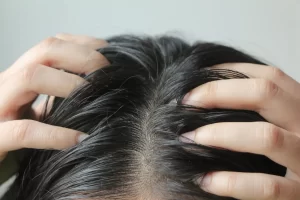
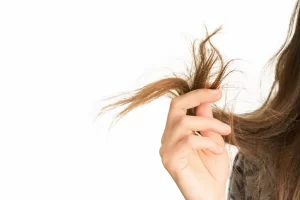
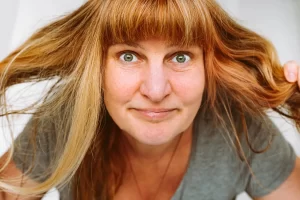
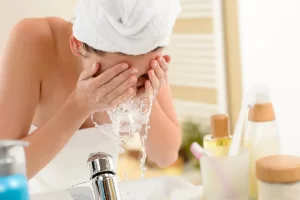

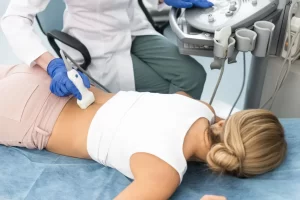
* These statements have not been evaluated by the Food and Drug Administration. This product is not intended to diagnose, treat, cure or prevent any disease.